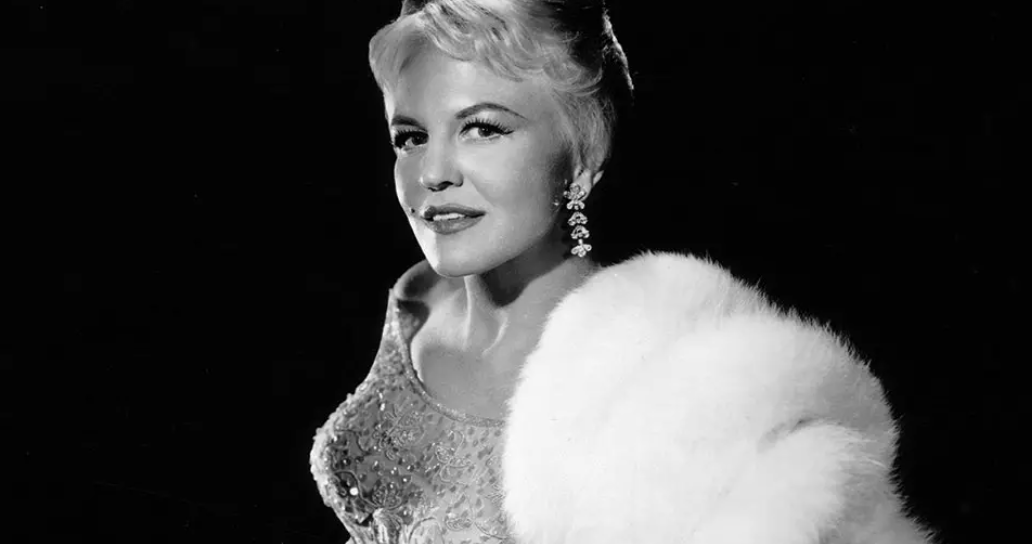
Is That All There Is?
Jim carroll
29/06/2011
‘Is that all there is, is that all there is?
If that’s all there is my friends, then let’s keep dancing.
Let’s break out the booze and have a ball
If that’s all there is.’
I remember the first time I heard Peggy Lee singing the classic Leiber and Stoller number, ‘Is That All There Is?’. The heroine relates how, through the course of her life, experiences that may initially have been exciting, had in fact turned out rather tiresome. From her home burning down, to going to the circus, to falling in love. It’s a hymn to disappointment and apathy. Like most teenagers I had spent large chunks of my short time on the planet lying in my room being incredibly bored. In amongst the bubble gum pop and dinosaur rock of Radio 1, a song that celebrated ennui was a rare and precious thing.
I remember the first time I heard the Clash sing ‘I’m So Bored with the USA’. I was simultaneously shocked and excited. Could one really so publicly proclaim disappointment with the home of rock’n'roll, the land of the free, the country that had given us Barry Manilow, Boz Scaggs and The Sound Of Bread? Was that acceptable? Was that legal?
I remember the first time I saw the painting Ennui by Walter Sickert. The bored couple cannot be bothered to look at each other. One stares into space and the other at the wall. The blank generation. Tedium in oils. And yet so utterly compelling.
It’s a curious thing. Apathy, boredom and tedium seem such dull, passive, inert qualities. Yet they can be exciting, inspiring, disruptive.
And I wonder whether this particular truth is lost on us and our world. We claim to be consumer experts. But are we not in denial of the fact that most consumers, most of the time are just not that into our brand or category? They just don’t care. We sustain a myth that the primary communication challenge is lack of attention, when really, more often than not, it’s lack of interest.
I started my career as a Market Researcher and occasionally I had to conduct focus groups to establish names and positioning concepts for industrial paints. I well recall the blank stares, the listless body language, the echoing silence. ‘Just call it paint’, one chap suggested.
I have often felt that a wholehearted recognition of the true level of consumer disinterest might conversely be the platform to build transformative engagement. Surely we can turn apathy, ennui and boredom into a positive force, a force for good.
Would not an honest acceptance of the diminished role a brand or category plays in consumers’ lives encourage us to think harder about utility, experience and reward?
Whilst I am keen to embrace and celebrate the apathy at the heart of many markets, I’m conscious that within our own business failing to care can be corrosive. John Bartle in his closing address to BBH some years ago warned that ‘the opposite of creativity is cynicism.’ And I’m sure he was right.
As I have aged I’ve noticed, regrettably, an increasing inclination to dismiss the new and original as familiar and derivative. We veterans are cursed by the ability to see antecedents, to cite failed precedent. ‘We tried that and it didn’t work’. Far from the wisdom of age, we suffer the scepticism of age. It’s a cancer. And we must cut it out if we are to sustain our careers.
When I first joined the business I fell in love with the bright eyed enthusiasm that characterised ad people. They seemed to share a particular genetic strain, high on hope and positive thinking, resilient to any disappointment. Like Weebles they wobbled, but they wouldn’t fall down.
I once read about a West Coast experiment where half of the sample took a test fortified by free hamburgers and the other half tackled the same test without sustenance. It transpired that the burgered sample significantly outperformed the unburgered and the researchers concluded that happier people work more effectively.
Being an enthusiastic adman, I’ll not pause to address the obvious shortcomings of this experiment. But I do agree with the key finding. The longer I have worked in this business, the more I have come to believe that enthusiasm is the critical factor that drives success.
We have a saying here that ‘positive people have bigger, better ideas’. I believe it’s true.
‘Is that all there is?’ You may well ask. Well, yes it is.
9 comments on “Is That All There Is?”
Edward Boches Said (June 29, 2011 at 11:52 am)
Great post. I am a cynic. But an eager and optimistic one. . See the article on Moleskin in today’s NY Times. Example of consumers who are not apathetic. Good news is that community and social and user influence and power make it harder for brands to bore us to death or buy their way onto our consideration list. Have to earn it by being interesting. Same as people.
Brad Noble Said (June 29, 2011 at 12:33 pm)
Reminds me of the enthusiasm and optimism required of the entrepreneur. Probably goes without saying but what the hell. There is much to overcome as an entrepreneur—the initial inertia, and then the doubting peers and then the periods of self-doubt. The only way to do it is to champion beyond reason what you’re doing. What you’re making. In so doing you find yourself living the work to make it great (and probably useful) because the market will show you that this is the only way to survive. The alternative is nothingness, which is an unacceptable outcome once you’re living it.
Ownership—and at the very least accountability to the product—marry the enthusiasm you describe to the end product instead of the next rung on the ladder of the otherwise apathetic careerists who for obvious reasons find themselves at big agencies and the big corporations who hire them.
In thinking this through, it seems easier to be enthusiastic and optimistic as an entrepreneur; there is no alternative. Much tougher to be so at an agency. Hat tip for championing enthusiasm where you are.
Sara C Said (June 29, 2011 at 2:32 pm)
Wow.. I’m a major cynic when it comes to some things (mostly that 4 letter L word), but consider myself very creative & immaginative. Heck, I have the Clash on vinyl and saw them twice in the US so I’m of a certain age as well. I’m not in the Ad world but know all to well the people who wear blinders and don’t want to veer from the straight and narrow. I threw out an idea to my friend yesterday about her website (about same age) and no reaction. It must be really tough to work with those who are resistent to change. Bring on the future, I’m excited about it!
Ed Hammerton Said (June 29, 2011 at 4:01 pm)
I think I agree: if you don’t believe in what you do/ are selling, how will anyone else?
The hard thing is not to finding this belief but sustaining it. Since I’m early on in my career I’ve yet to reach that point, but I’m sure at some point I will. So how do you find the enthusiasm again?
bobbyjohn Said (June 29, 2011 at 5:24 pm)
Cynicism is the cancer that’s growing exponentially in the modern age. There is so much that is surrounding us that we’re becoming cynical as ad people and as consumers. Enthusiasm, positivity, and belief are values I believe a company should nurture the most if they want brilliant creativity.
Melissa Robison Said (June 29, 2011 at 6:54 pm)
Nice post and completely true. I cut my professional teeth in independent film prior to getting into the creative/advertising industry and learned early on that people who take each day and endeavor by the horns and with gusto succeed most. It’s sometimes scary to be so enthusiastic when you know what may be at risk. However, the good thing is that you can reap great rewards while others are contemplating failure.
Yes, that is all there is. | Martinez Creative Said (June 30, 2011 at 3:56 am)
[...] Is That All There Is? [...]
Eddie Haydock Said (July 1, 2011 at 12:09 am)
I agree with the other Ed. I love what I think you’re saying.
Jim Carroll Said (July 1, 2011 at 9:38 am)
Thank you all for your thoughtful responses.I’m conscious that I made two different points in the piece ne about the Careless Consumer and one about the Caring Creative.
I’ve struggled a little to harness these two thoughts,but I’m sure there is a connection.
‘I don’t care’ is one of the most hurtful things one can say to another human being.And yet it sometimes seems inappropriate that we should care at all for fizzy pop,fancy trainers, yellow fats ,and the shrill clamour of the advertising that promotes them.Perhaps whilst naturally the most worthy recipients of our concern are our family, friends ,other human beings,what makes life interesting is the application of concern to the inanimate,the commoditised or trivial.
I confess I care about Bic biros (fine),cornish pasties and the window seat on the 19 bus .Perhaps not in the same way as I care about my friends,but I do care nonetheless. And yes I care about advertising.So I believe it is reasonable to want consumers to care about brands.But we must start from the knowledge that in most instances,quite understandably, they really couldn’t care less.And thus the challenge must be more than the anodyne exchange of messages between two nodes on a graph.Because caring costs.

